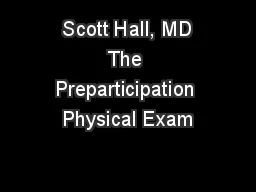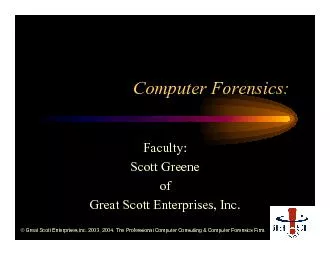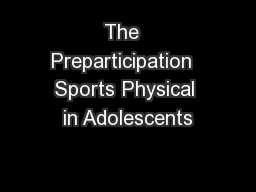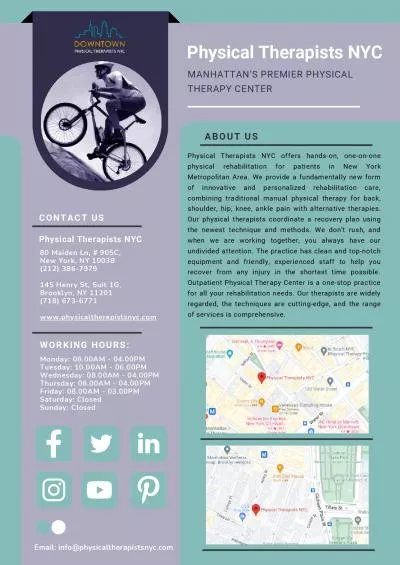PPT-Scott Hall, MD The Preparticipation Physical Exam
Author : trish-goza | Published Date : 2020-04-04
Goals of the Preparticipation exam PPE Content of the PPE Clearance of athletes Use of the PPE as a tool to prevent sudden cardiac death Use the information to
Presentation Embed Code
Download Presentation
Download Presentation The PPT/PDF document " Scott Hall, MD The Preparticipation Phy..." is the property of its rightful owner. Permission is granted to download and print the materials on this website for personal, non-commercial use only, and to display it on your personal computer provided you do not modify the materials and that you retain all copyright notices contained in the materials. By downloading content from our website, you accept the terms of this agreement.
Scott Hall, MD The Preparticipation Physical Exam: Transcript
Download Rules Of Document
" Scott Hall, MD The Preparticipation Physical Exam"The content belongs to its owner. You may download and print it for personal use, without modification, and keep all copyright notices. By downloading, you agree to these terms.
Related Documents














